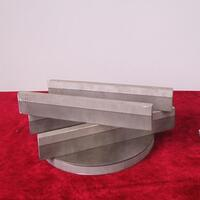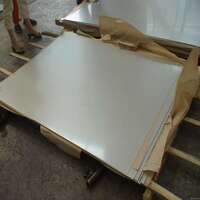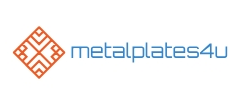1. Introduction
Just 24 hours ago, a major architecture firm in Copenhagen unveiled a new mixed-use development featuring a striking corten steel facade paired with vertical standing seam metal siding—sparking renewed interest in durable, low-maintenance metal clad exteriors. As sustainability and longevity drive modern construction, understanding what ‘metal clad’ truly means—and how different clad metals perform—is more relevant than ever.

At its core, the metal clad meaning refers to materials or structures composed of two or more bonded metal layers, combining the benefits of each. Whether it’s a metal clad wall on a luxury home, aluminum clad pipe insulation in industrial plants, or copper siding on a boutique hotel, clad metals offer enhanced corrosion resistance, strength, aesthetics, and cost-efficiency.
2. Understanding Clad Metal Meaning and Types
2.1. What Is Clad Metal?
Clad metals—also written as metalclad—are engineered composites where a base metal (like carbon steel) is bonded to a corrosion-resistant or decorative layer (such as stainless steel, copper, or zinc). This bonding can occur through roll bonding, explosion cladding, or electroplating. The result? A material that’s both economical and high-performing.
Common examples include aluminum clad steel, stainless clad aluminum, and titanium clad plates used in aerospace and chemical processing. In construction, this concept scales up to entire systems: metal clad roofs, metal clad siding, and even full metal clad buildings.
2.2. Key Metal Clad Types in Architecture
Architects today choose from a rich palette of metal clad options:

- Corten steel siding: Known for its rust-like patina and structural integrity, often used in modern steel clad houses. Corten siding cost varies but offers long-term value due to minimal maintenance.
- Zinc metal siding and zinc clad dormer: Elegant, self-healing surfaces ideal for European-inspired designs.
- Copper siding: Develops a green verdigris over time; prized for heritage and high-end projects.
- Exterior corrugated metal siding: Industrial-chic and budget-friendly, especially with colorbond standing seam or pac clad hwp finishes.
- Aluminum clad sheet or aluminium clad steel: Lightweight, corrosion-resistant, and recyclable—perfect for metal weatherboard or pac clad column covers.
3. Performance Comparison: Steel, Aluminum, Zinc, and Copper Cladding
3.1. Durability and Maintenance
Corten steel plate forms a stable oxide layer that halts further corrosion—ideal for exposed facades like a corrugated steel facade. However, it’s not suitable for high-salt or high-humidity coastal zones without treatment.
Zinc clad roof systems last 80–100 years with almost zero upkeep. Copper siding shares similar longevity but at a higher upfront cost. Aluminum clad steel wire and sheets resist rust better in marine environments, making them popular for metal clad sheds near the coast.
3.2. Aesthetics and Design Flexibility

Standing seam facade systems—like pac clad standing seam roof or vertical standing seam metal siding—offer clean lines and seamless integration with glass. Meanwhile, materials like diamond plate steel or aluminum tread plate add texture for accent walls or base cladding.
For those seeking warmth, brass plates for engraving or bronze plate accents can be incorporated into metal nameplates or entry features on a metal clad house.
4. Industrial and Electrical Applications of Metal Clad Systems
Beyond architecture, metal clad meaning extends to critical infrastructure. Metal clad electrical wire (often called MC cable) features an aluminum or steel armor for fire and impact resistance—common in commercial buildings, including in Pennsylvania where code compliance is strict.
Aluminum clad stainless steel and stainless clad aluminum are used in heat exchangers and food processing due to their thermal conductivity and hygiene. Similarly, cu clad wire and aluminum clad wire serve specialized roles in electronics and grounding.
In piping, aluminum clad pipe insulation protects against thermal loss and mechanical damage. For high-wear surfaces, chrome carbide overlay plates or inconel 625 weld overlay enhance hardness in mining or power plants.
5. Cost, Availability, and Material Selection
When sourcing materials like 1/4 steel plate, 316 stainless steel plate, or 6061 T6 aluminum plate, buyers often search for ‘steel plate near me’ or ‘aluminum sheet for sale.’ Prices vary widely: corten steel siding cost runs $8–$15/sq.ft., while zinc metal siding can exceed $20/sq.ft.
Thick steel plate (e.g., 3/16 metal plate or 1/8 inch steel plate) is essential for structural base plates, while perforated plate or metal plate with holes serves acoustic or decorative functions. Alloy plate options like 7075 T6 clad or 2024 T3 clad cater to aerospace needs.
Distributors often stock stainless steel sheet and plate in grades like 304L, 316L, or 904L—each offering different corrosion resistance. For flooring, stainless steel diamond plate or aluminum diamond tread plate provides slip resistance without sacrificing style.
6. Conclusion
From the sleek steel facade of a downtown office to the rustic charm of a corten steel siding home, metal clad systems blend function, form, and future-proofing. Whether you’re selecting clad metals for a pac clad coping detail or specifying aluminum clad stainless steel for a chemical tank, understanding the nuances of each metal clad type ensures smarter, more sustainable builds. As demand grows for resilient, recyclable exteriors, metal clad isn’t just a trend—it’s the foundation of next-gen design.
Our Website founded on October 17, 2012, is a high-tech enterprise committed to the research and development, production, processing, sales and technical services of ceramic relative materials such as Metal. Our products includes but not limited to Boron Carbide Ceramic Products, Boron Nitride Ceramic Products, Silicon Carbide Ceramic Products, Silicon Nitride Ceramic Products, Zirconium Dioxide Ceramic Products, etc. If you are interested, please feel free to contact us.
